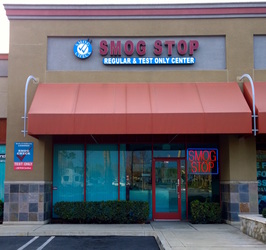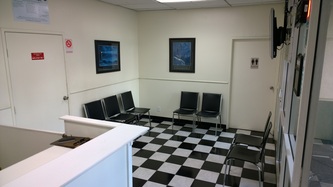CLEAN AIR IT'S EVERY ONE'S JOB.
We love driving and taking care of our new cars just as we love our beautiful surroundings and nature.
We all have a duty to take care of our environment as well, for us now in the present and to ensure a clean environment in the future for generations to come.
We all have a duty to take care of our environment as well, for us now in the present and to ensure a clean environment in the future for generations to come.

Why Should You Be Concerned About Air Pollution?
You could go days without food and hours without water, but you would last only a few minutes without air. On average, each of us breathes over 3,000 gallons of air each day. You must have air to live. However, did you know that breathing polluted air can make you sick?
Air pollution can damage trees, crops, other plants, lakes, and animals. In addition to damaging the natural environment, air pollution also damages buildings, monuments, and statues. It not only reduces how far you can see in national parks and cities, it even interferes with aviation.
In 1970, Congress created the Environmental Protection Agency (EPA) and passed the Clean Air Act, giving the federal government authority to clean up air pollution in this country. Since then, EPA and states, tribes, local governments, industry, and environmental groups have worked to establish a variety of programs to reduce air pollution levels across America.
You could go days without food and hours without water, but you would last only a few minutes without air. On average, each of us breathes over 3,000 gallons of air each day. You must have air to live. However, did you know that breathing polluted air can make you sick?
Air pollution can damage trees, crops, other plants, lakes, and animals. In addition to damaging the natural environment, air pollution also damages buildings, monuments, and statues. It not only reduces how far you can see in national parks and cities, it even interferes with aviation.
In 1970, Congress created the Environmental Protection Agency (EPA) and passed the Clean Air Act, giving the federal government authority to clean up air pollution in this country. Since then, EPA and states, tribes, local governments, industry, and environmental groups have worked to establish a variety of programs to reduce air pollution levels across America.

Air Pollution and Your Health
Breathing polluted air can make your eyes and nose burn. It can irritate your throat and make breathing difficult. In fact, pollutants like tiny airborne particles and ground level ozone can trigger respiratory problems, especially for people with asthma. Today, nearly 30 million adults and children in the United States have been diagnosed with asthma. Asthma sufferers can be severely affected by air pollution. Air pollution can also aggravate health problems for the elderly and others with heart or respiratory diseases.
Breathing polluted air can make your eyes and nose burn. It can irritate your throat and make breathing difficult. In fact, pollutants like tiny airborne particles and ground level ozone can trigger respiratory problems, especially for people with asthma. Today, nearly 30 million adults and children in the United States have been diagnosed with asthma. Asthma sufferers can be severely affected by air pollution. Air pollution can also aggravate health problems for the elderly and others with heart or respiratory diseases.

Cars, Trucks, Buses, and "Nonroad" Equipment
Today, motor vehicles are responsible for nearly one half of smog-forming volatile organic compounds (VOCs), more than half of the nitrogen oxide (NOx) emissions, and about half of the toxic air pollutant emissions in the United States. Motor vehicles, including nonroad vehicles, now account for 75 percent of carbon monoxide emissions nationwide.
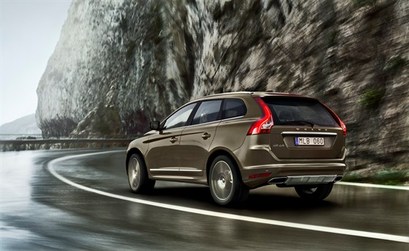
Common Reasons for Failing an Emissions Test
An emissions test is a test conducted on vehicles to check for pollutant emissions produced by the engine of a car. There are generally specific standards a vehicle must pass to be cleared from the emissions test. However, there are times when an engine fails this test. Below are some of the common reasons for failing an emissions test.
An emissions test is a test conducted on vehicles to check for pollutant emissions produced by the engine of a car. There are generally specific standards a vehicle must pass to be cleared from the emissions test. However, there are times when an engine fails this test. Below are some of the common reasons for failing an emissions test.
- Fuel metering out of specification.There are several factors that can cause a fuel metering of your vehicle to be out of specification. It may be due to a faulty computerized engine control, carburetor, or fuel injection unit
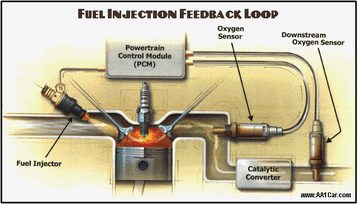
- Faulty oxygen sensor.The oxygen sensor in a vehicle measures the amount of oxygen in the exhaust gas. A faulty or defective oxygen sensor is not uncommon and can be caused by several things. A faulty oxygen sensor can lead to other problems including overheating, higher toxic emissions and loss of acceleration power
- Defective ignition system.This means that during an HC check, the analyzer detects high Hydrocarbons. If the vehicle is not properly maintained then expect to have an ignition system that is defective causing it to fail an emissions test. The most common causes of high HC are defective spark plugs wires, worn out spark plugs, over advanced ignition timing or a worn out distributor cap
- Leaks in the vehicle's vacuum.Vacuum leaks are another common reason for an emissions test failure. A vacuum leak is often caused by the MAP sensor not working properly. The MAP sensor measures the load of an internal combustion of the engine's electronic control system. Leaks may be found in the gaskets or vacuum lines of the
- Rich fuel mixture. High CO2levels are often caused by high carbon monoxide levels due to a weak ignition or a rich air/fuel mixture. There are numerous causes of a rich fuel mixture. A contaminated oxygen sensor, leaky injectors, and excessive fuel pressure are some common causes of richness to the mixture
- Malfunction in the air injection system.The air injection system helps reduce the emission of hydrocarbons and carbon monoxide of a car. This is done by forcing fresh air into the exhaust of the engine. If the air injection system is defective or malfunctions, the engine is not able to properly control the levels of hydrocarbons and carbon monoxide emission causing the car to emit high levels of these dangerous gases
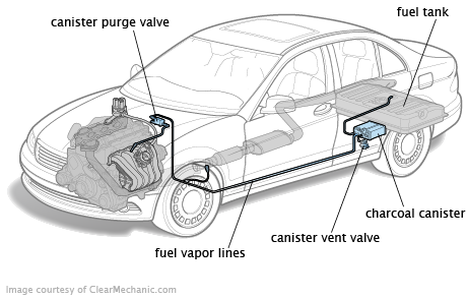
Faulty evaporative emission control system. EVAP or Evaporative Emission Control System prevents gasoline vapors from the fuel system and tank from being released into the atmosphere. Some of the more common causes of a faulty EVAP include leaks in the vacuum hoses and vents, defective purge valves, or faulty gas caps
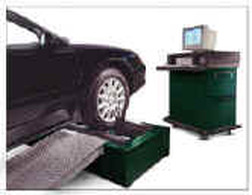
How Emissions Test Equipment Works
Generally, the equipment used for vehicle emissions testing varies but the overall performance and duty is the same.
In a smog check program, there are generally three types of vehicle inspections. The Acceleration Simulation (ASM) is done to check for the emission of dangerous gases like carbon monoxide. The On-Board Diagnostics (OBD) is the computer system in a vehicle that monitors the performance and status of the ignition system and emission control equipment. TSI or Two-Speed Idle is used to test vehicles model year 1995 and older for emission gases.
Gas Analyzers
There are different types of gas analyzers used in emissions tests to measure the levels of emission gases in a vehicle.
The four gas analyzer is used to monitor the four gases that need to be monitored according to EPA emissions standards. These gases are carbon monoxide (CO), hydrocarbons (HC), carbon dioxide (CO2), and oxygen (O2). The gas analyzer is inserted in the tail pipe of the vehicle to measure the levels of emission of these gases. The four gas analyzer uses a sampling probe that tests a tiny part of the exhaust gases. However, unlike the five gas analyzer, the four gas analyzer is not capable of measuring nitrogen oxides.
The five gas analyzer is capable of measuring the five different gases that are considered dangerous by EPA. Just like the four gas analyzer, it measures the levels of emission gas of the four gases plus nitrogen oxides.
There are portable gas analyzers that use infrared. This type of emissions test equipment works by measuring the temperature of each of the emission gases.
There are also diesel smoke analyzers which are more suitable for vehicles running on diesel. This analyzer also uses the infrared technique with Bluetooth communication. Some analyzers have combined functionalities that combine the ability to measure gas and smoke.
Almost all of the Gas Analyzers have LCD screen and computer system to display the data gathered from the test.
DLC Scanner
The DLC Scanner or Diagnostic Link Connector Scanner is used to scan and check if the DLC is monitor ready. The scanner must be plugged in to the Diagnostic Link Connector to work. If the number of monitors allowed is not ready then often times the vehicle is rejected. The owner is asked to come back after they have driven a distance that will set the readiness flag.
The DLC Scanner is also used to check if the MIL light is either on or off. The Malfunction Indicator Lamp is like a signal warning the owner of any problem or malfunctions in the engine. With this in mind, it is very important that the MIL light is always in good condition.
The MIL light uses Check Engine, Service Engine Soon, or Check Engine Soon to indicate the status of the engine. Often times, the MIL light is turned on if the car engine is experiencing some problems that can cause excessive pollutant emissions. The scanner also retrieves any fault codes that may be present.
Generally, the equipment used for vehicle emissions testing varies but the overall performance and duty is the same.
In a smog check program, there are generally three types of vehicle inspections. The Acceleration Simulation (ASM) is done to check for the emission of dangerous gases like carbon monoxide. The On-Board Diagnostics (OBD) is the computer system in a vehicle that monitors the performance and status of the ignition system and emission control equipment. TSI or Two-Speed Idle is used to test vehicles model year 1995 and older for emission gases.
Gas Analyzers
There are different types of gas analyzers used in emissions tests to measure the levels of emission gases in a vehicle.
The four gas analyzer is used to monitor the four gases that need to be monitored according to EPA emissions standards. These gases are carbon monoxide (CO), hydrocarbons (HC), carbon dioxide (CO2), and oxygen (O2). The gas analyzer is inserted in the tail pipe of the vehicle to measure the levels of emission of these gases. The four gas analyzer uses a sampling probe that tests a tiny part of the exhaust gases. However, unlike the five gas analyzer, the four gas analyzer is not capable of measuring nitrogen oxides.
The five gas analyzer is capable of measuring the five different gases that are considered dangerous by EPA. Just like the four gas analyzer, it measures the levels of emission gas of the four gases plus nitrogen oxides.
There are portable gas analyzers that use infrared. This type of emissions test equipment works by measuring the temperature of each of the emission gases.
There are also diesel smoke analyzers which are more suitable for vehicles running on diesel. This analyzer also uses the infrared technique with Bluetooth communication. Some analyzers have combined functionalities that combine the ability to measure gas and smoke.
Almost all of the Gas Analyzers have LCD screen and computer system to display the data gathered from the test.
DLC Scanner
The DLC Scanner or Diagnostic Link Connector Scanner is used to scan and check if the DLC is monitor ready. The scanner must be plugged in to the Diagnostic Link Connector to work. If the number of monitors allowed is not ready then often times the vehicle is rejected. The owner is asked to come back after they have driven a distance that will set the readiness flag.
The DLC Scanner is also used to check if the MIL light is either on or off. The Malfunction Indicator Lamp is like a signal warning the owner of any problem or malfunctions in the engine. With this in mind, it is very important that the MIL light is always in good condition.
The MIL light uses Check Engine, Service Engine Soon, or Check Engine Soon to indicate the status of the engine. Often times, the MIL light is turned on if the car engine is experiencing some problems that can cause excessive pollutant emissions. The scanner also retrieves any fault codes that may be present.

Emissions Inspection Standards around the U.S.
- Hydrocarbons.Hydrocarbons are produced when the fuel either only partially burns or does not burn at all. In the atmosphere, hydrocarbons react with sunlight and nitrogen oxides to make ozone. The ozone found at ground level is part of smog. This is one of the worst causes of air pollution and can irritate the eyes, affect the breathing, damage lungs, and has even been tied to cancer. The maximum amount of hydrocarbons that can be released from a transitional low emission vehicle (TLEV) passenger car is 0.156 g/mi,. An ultra low emission vehicle (ULEV) has a standard of 0.055 g/mi.
- Nitrogen oxide.This compound is formed when oxygen and nitrogen atoms are combined at high pressure. The engine is the perfect place for nitrogen oxides to form. Nitrogen oxides are the main cause of acid rain and can also form ozone in the atmosphere as it binds with hydrocarbons. The greatest amount of nitrogen oxide emissions for a TLEV is 0.6 g/mi and from an ULEV is 0.3 g/mi.
- Carbon monoxide.Carbon monoxide forms when the fuel is not completely oxidized to carbon dioxide but instead only manages to be partially oxidized, to carbon monoxide. This chemical is very toxic to humans and can reduce and eventually stop oxygen getting to the brain. This is one of the main emissions from vehicles. A TLEV vehicle must stay under 4.2 g/mi of carbon monoxide and an ULEV vehicle under 2.1 g/mi.
- Carbon dioxide.Carbon dioxide is one of the main greenhouse gases contributing to the increased temperature of the earth's atmosphere. It is produced even when your engine is working perfectly and all of the fuel is burned or oxidized.
- Emissions from evaporation.There are several emissions that reach the air by the evaporation of fuel. This is mainly how hydrocarbons are released. The highest rates of evaporation occur during a hot day. This evaporation occurs when the fuel in the car tank heats up and gasoline vapors are vented to reduce pressure. As your engine runs and warms up, it will vaporize some fuel when it is running. After you have driven your car for a while gasoline evaporation will occur until the engine cools down. When you are refueling you force the gas vapors out of the tank as you pump more fuel in. For passenger cars this emissions must be under 2.0 g/test for 1 hour of a hot soak.
- State inspections. Besides the federal standards listed above, each state will have its own standards. Most states require an annual check of emissions.
Call us to schedule your Smog Check Inspections
We take in walk in on a First come first serve basics.
We also offer Smog Check Failure Diagnostics at our Archibald Store Location.
If you have any questions about Smog Check Inspections Please call us at one of our 2 locations.
LOC#1 LOC#2
8870 - A , Archibald Ave, 8220 Masi Dr, STE # C,
Rancho Cucamonga CA 91730. Rancho Cucamonga CA 91730
909 484 7664 909 948 0420
909 581 1980
Mon - Fri 8:30 AM - 5:00 PM Mon - Fri 8:30 AM - 5:00 PM
Saturday 8:30 AM - 3:00 PM Saturday 8:30 AM - 4:00 PM
We take in walk in on a First come first serve basics.
We also offer Smog Check Failure Diagnostics at our Archibald Store Location.
If you have any questions about Smog Check Inspections Please call us at one of our 2 locations.
LOC#1 LOC#2
8870 - A , Archibald Ave, 8220 Masi Dr, STE # C,
Rancho Cucamonga CA 91730. Rancho Cucamonga CA 91730
909 484 7664 909 948 0420
909 581 1980
Mon - Fri 8:30 AM - 5:00 PM Mon - Fri 8:30 AM - 5:00 PM
Saturday 8:30 AM - 3:00 PM Saturday 8:30 AM - 4:00 PM


